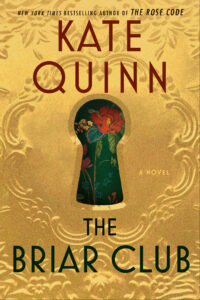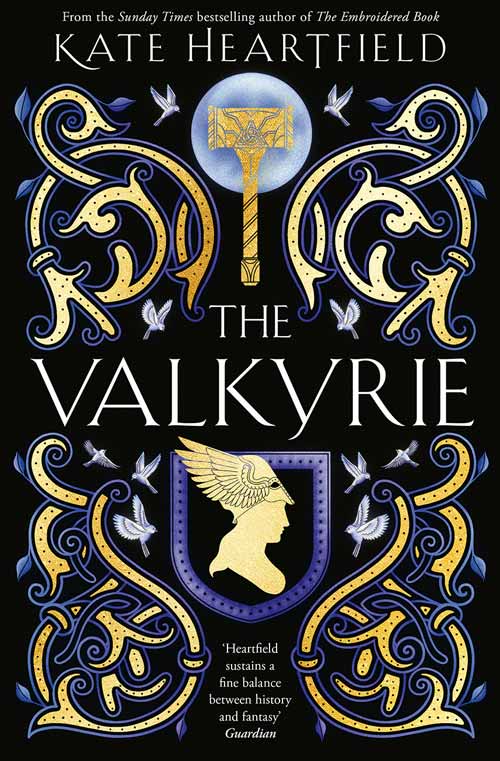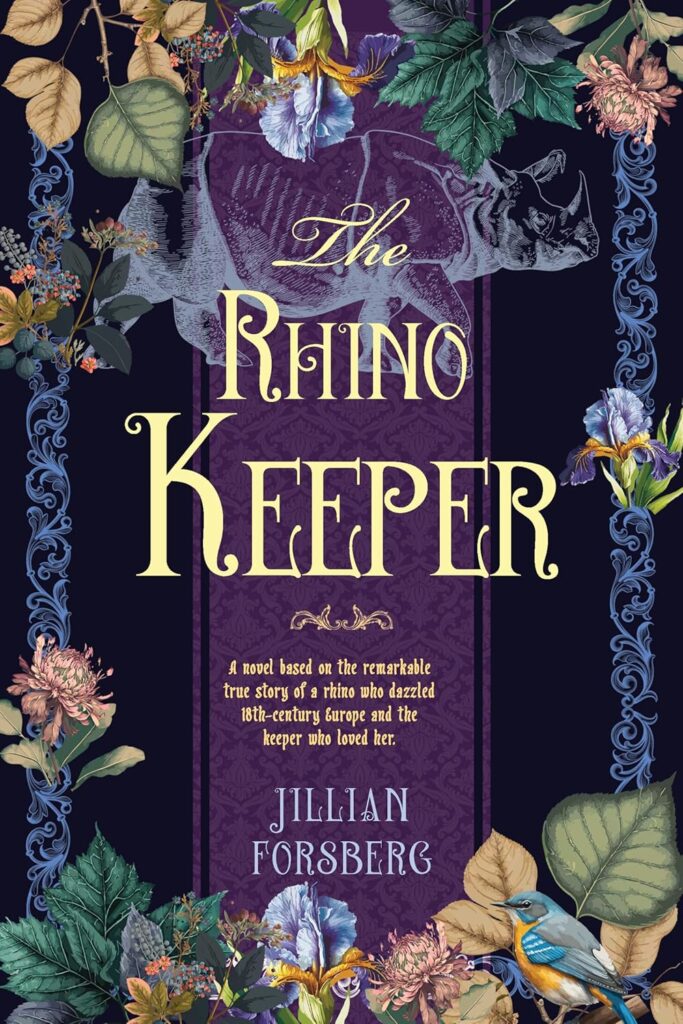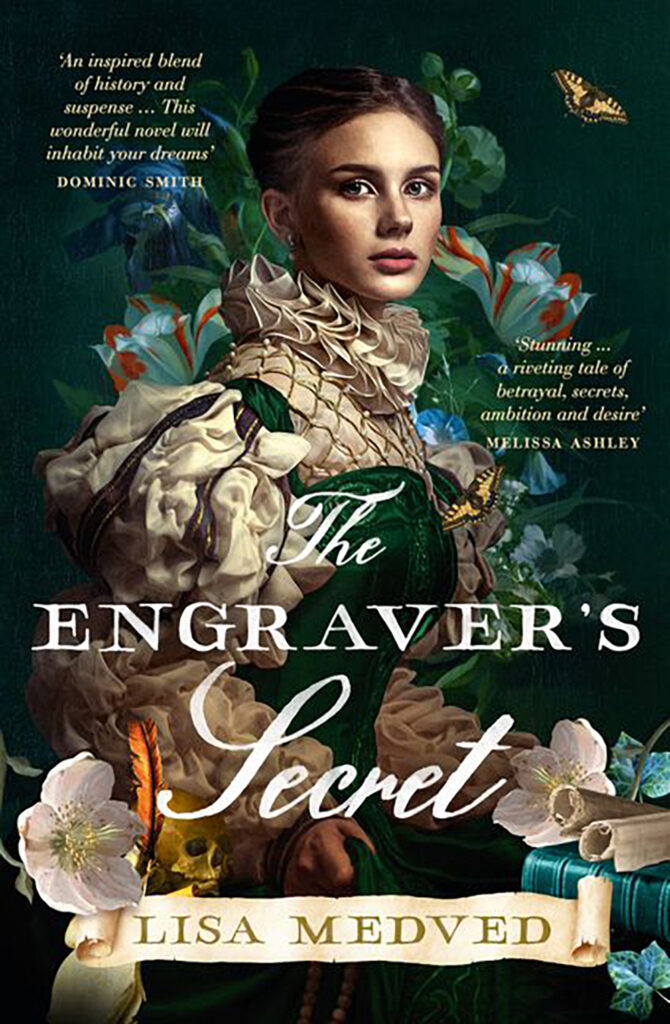In Conversation with Kate Quinn About Her New Novel, The Briar Club
 BY NICOLE EVELINA
BY NICOLE EVELINA
When your previous books have spent multiple weeks on the New York Times bestseller list, one was selected for Reese Witherspoon’s book club and you’re an in-demand speaker at conferences across the globe as one of the top historical fiction authors of your time, how do you follow that up? If you’re Kate Quinn, with “something,” in the words of Monty Python “completely different.”
Kate is famous for her World War II novels, but in The Briar Club (William Morrow, July 2024) she brings us into America’s Golden Age of the 1950s through the eyes of five women who show us the period’s stereotypical Leave It To Beaver image is anything but accurate. Set amid the Red Scare that made McCarthy a household name, the titular female boarding house is a character in its own right, reacting to the goings-on within its walls and bringing together strong females who in another setting might be only ships passing in the night. However, united under its roof, they show that female strength (and human weakness) comes in many forms.
Free spirit Grace March is the magnet that brings these women into the same orbit with her Thursday night dinner parties that allow them to escape the prim and proper oppression of their dour landlady and express themselves freely. Among them are British transplant, Fliss, whose quest to uphold the ideal image of wife and mother has left her teetering on the edge of a mental breakdown; straightlaced archivist Nora, whose attraction to the bad boys just might get her killed; Reka, whose harrowing escape from World War II has left her bitter and forced her into a double life as she seeks to redress a long-past wrong; Beatrice, whose unusual career as a female baseball star is sidelined by injury; and future Stepford wife Arlene, who embodies the traditional values and prejudices of the era, even when that means betraying those closest to her.
I recently had the opportunity to talk with Quinn about this page-turning departure from her previous works. Below is an abbreviated version of our conversation.
How would you describe The Briar Club?
In a nutshell, it’s about a group of very different women who live under the same roof at an all-female boarding house in early 1950s Washington DC. With the arrival of a mysterious Iowa widow who moves into the attic room and begins a weekly supper club, the women begin to realize they have friendship and support to offer each other…but they also come to realize that they all have secrets. And an explosion of violence on Thanksgiving 1954 brings all the secrets to light.
This book is different from my last few in that it doesn’t center around a war. But it still has the common Kate Quinn themes of a mystery thread that pulls throughout, found family supporting each other, and badass women doing badass things!
What drew you to this story? What was your inspiration?
The Briar Club came together out of pandemic-year loneliness plus a footnote from my husband’s undergraduate degree. In “Alone in the Kitchen with an Eggplant” from the superb essay collection Home Cooking, food writer Laurie Colwin wrote with humor and heart about her years as a broke twenty-something living in a broom-closet sized apartment in New York, managing to feed her equally broke friends from a kitchenette consisting of a mini-fridge, a hot-plate, and a dish-rack parked in the bathroom.
I reread that essay a lot during the pandemic, whimpering—I’d have happily cooked on a hot-plate and drained spaghetti in my bathtub if I could be surrounded by loved ones, scraped plates, and half-empty bottles of wine. “Could this be a book?” I thought. “Stranger comes to town, pulls housemates together with weekly dinners in her tiny apartment?” Pretty low stakes for a Kate Quinn book, though; nobody getting bombed, arrested, or shot. And then my husband (whose degree work was in International Relations/Foreign Security and Intelligence, with a focus on post-World War II eastern Europe through the post-Soviet bloc) casually dropped a tidbit about the Cold War that made the entire book come together in my head in one big lightbulb flash: a supper club and a mysterious stranger cooking dinner for her friends, all pulled together with one big McCarthy-era twist.
What made you decide to make the house itself a character?
That was an inspiration that came quite late in the process! I’ve always believed that places can very much have personalities, and since this book is tied so firmly to the theme of “what makes a house into a home?” it seemed natural to give the house a quite literal personality. The frame of this book (which involves the unfolding investigation of a murder in the house) was originally told from the point-of-view of the detective on duty, but police procedural stuff bores me, and I realized I wasn’t interested in the detective. So I put all those framing scenes into the point-of-view of the house itself, commenting on the drama unfolding within its walls and very much invested in the outcome for the people who live inside.

author photo by Laura Jucha Photography
What are some of the themes in the book?
No one ever knows what is going on in someone else’s life. That has always been true, and it’s even more true now when we’re treated to carefully curated visions of the lives of others through social media, when generally only the good and the photogenic is presented for the public eye. In The Briar Club, the point of view rotates in turn through each of the women who live at the boarding house, so the reader becomes acquainted with each woman first as the others think of her…and then the truth of how she thinks of herself.
What do you hope that readers will take away from this book?
I hope that when people finish reading it, they’ve found a story they loved full of women they admire. And I hope they have food for thought about what it means to be American and how we can be proud of our homeland but temper that pride with the knowledge of where we’ve gone wrong and how we can do better in future.
Why did you decide to switch from World War II historical fiction to 1950s-1960s mystery?
I wanted to move away from the world wars for the next book, and my attention fell on the 1950s because I’ve always found it an interesting decade. It’s seen by many as an idyllic (or boring, or repressive, depending on who you ask) period of peace and domesticity between the war-driven upheaval of the forties and the social upheaval of the sixties.
But as with most outwardly peaceful periods of history, there’s a lot going on under the surface: the hangover from World War II is far from over, and the desire for social change is coming to a boil even if its effects won’t be seen for a few years yet. The US seemed like the best location to set a fifties book: America was very much taking the lead during that decade—prosperous where so much of the rest of the world was rebuilding from war, eager to lead in everything from scientific advancement to the space-race, but still backward in many other ways: segregation and racism still rampant; women hamstrung in the workplace and pushed into the feminine ideal of the fifties housewife; anti-communist fervor leading to witch-hunts where innocent people’s lives were destroyed because of what they believed or who they knew. Lots of grist for a story!
About the contributor: Nicole Evelina is a historical fiction and women’s fiction author, as well as a book reviewer for HNS, Historical Honey and Sirens. She can be found online here.






